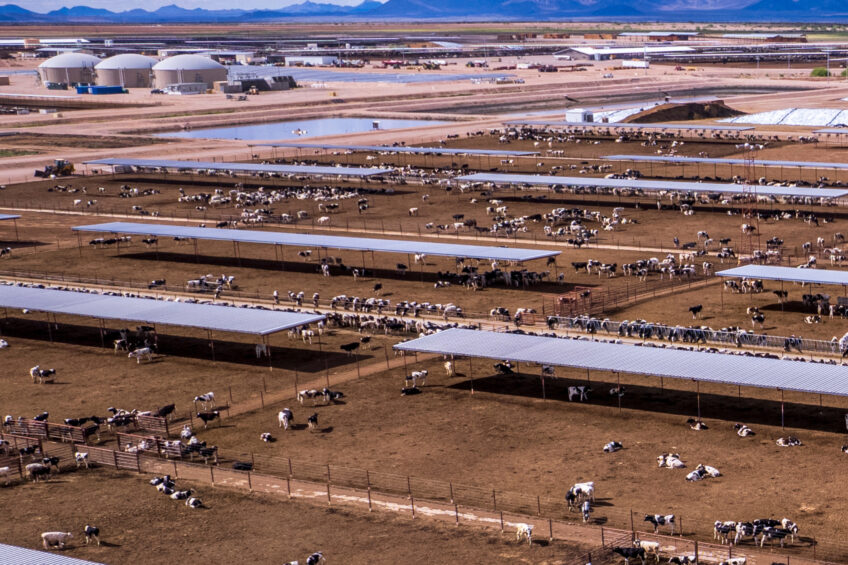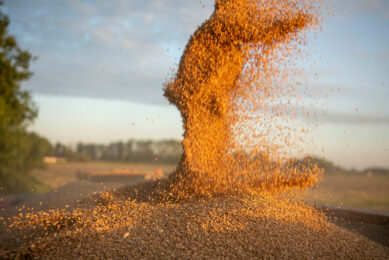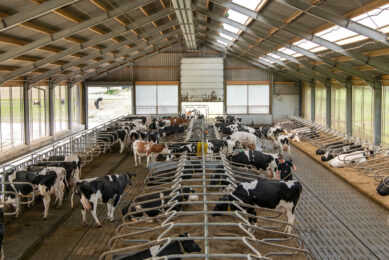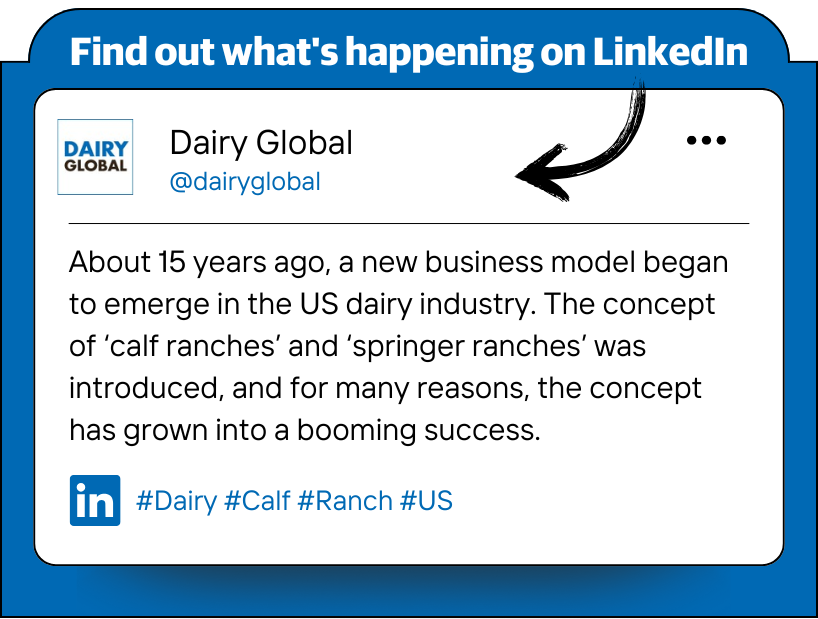US dairy shift: Fewer farms, bigger herds, higher efficiency

The US dairy industry is in the midst of a profound transformation. Over the past 2 decades, the number of dairy farms has decreased significantly, while the size of individual farms has increased. As a result, dairy farms have become more efficient, producing more milk with fewer cows thanks to advances in technology and management practices.
According to a recent USDA report, the transformation means that larger farms, in particular, benefit from economies of scale, lower costs per unit of milk produced, and higher levels of technology adoption. However, the rise of large dairy farms is not without its challenges. Smaller farms are increasingly struggling with high costs and low profitability, while larger operations continue to grow. The future of US dairy farming will probably be shaped by these ongoing trends of consolidation, technological innovation, and regional differences in farm size and practices.
In the report ‘Structure, Costs, and Technology Used on US Dairy Farms’ the USDA points out that understanding these trends will be crucial for policymakers, farmers, and consumers alike, all of whom will be affected by the changes in the US dairy sector. The ongoing shift towards larger, more specialised farms highlights the need for continued investment in technology, farm management, and policies that support dairy producers of all sizes.
Fewer farms, more milk
US dairy production has evolved, mainly regarding milk production, farm size, costs, efficiency, and the adoption of new technologies. From 1934 to 2022, the number of dairy farms in the US fell dramatically, from 5.2 million to just 36,024.
Despite this significant drop, milk production more than doubled, rising from 101.6 billion pounds (46.08 billion kg) in 1934 to 226.4 billion pounds (102.67 billion kg) in 2022. This stark contrast illustrates the increasing efficiency of dairy farming: fewer, larger farms are now responsible for producing more milk.
Over the past 20 years, this trend has continued, with milk production rising by 33%, from 170.3 billion pounds (77.2 billion kg) in 2003 to 226.4 billion pounds (102.67 billion kg) in 2023. Meanwhile, the number of dairy herds licensed to sell milk dropped by 63%, from 70,375 in 2003 to 26,290 in 2023. This decline is consistent with a steady increase in farm size and productivity.
As dairy farms grow in size, their efficiency improves. The average number of pounds of milk produced per cow per year increased by 29% from 2003 to 2023, rising from 18,759 pounds (8,507 kg) to 24,117 pounds (10,942 kg). This increase in cow productivity can be largely attributed to adopting advanced technologies, management practices, and genetic improvements in breeding.
A closer look at farm sizes reveals that over the past 2 decades, the number of dairy farms with fewer than 50 cows has declined by 79%, while the number of farms with 1,000 cows or more has increased by 60%.
Midpoint dairy herd size
Larger dairy farms benefit from economies of scale, enabling them to produce milk at a lower cost per unit. These larger farms are more likely to adopt cutting-edge technologies and efficient management systems, contributing to their greater productivity.
One notable trend is the rise in the midpoint dairy herd size – the average size of dairy herds in the US is increasing and more dairy cows are now found on larger farms, while fewer are on smaller farms. In 2000, the midpoint herd size was just 180 cows, but by 2021, this had increased to 1,260 cows. This shift illustrates the growing dominance of larger dairy farms.
Dairy farms have also become more specialised in milk production. In 2000, about 83% of a farm’s value came from milk, and by 2021, this number had increased to 88%. At the same time, US dairy farms are producing fewer other crops and livestock, focusing more on the dairy enterprise.
Economic impacts
The financial structure of dairy farms has also shifted over the years. With the growth of farm size, gross cash farm income has increased, as have both farm operator income and off-farm income. For example, in 2021, the average dairy farm had 283 cows, compared to just 112 cows in 2000. As a result, larger farms generate more income, both from dairy sales and other sources, although the percentage of income derived from off-farm sources has varied.
Data from the 2021 Agricultural Resource Management Survey (ARMS) show that larger farms are less reliant on off-farm income, with smaller farms still depending more on external sources to sustain the household. In fact, for farms with fewer than 50 cows, 34% of household income came from off-farm activities. In contrast, for farms with more than 2,000 cows, this percentage dropped to just 3%.
Role of technology
The use of advanced technologies and management practices has become a key factor in dairy farm success, particularly on larger farms. From automated milking systems to genetic enhancements, technology plays a critical role in boosting productivity.
The adoption of technologies like recombinant bovine somatotropin (rbST), which stimulates milk production in cows, has declined over the years, partly due to consumer concerns and dairy industry shift.
The size of a dairy farm has a significant impact on various operational aspects, including farm structure, technology usage, costs, and returns. The ARMS data from 2021 shows clear differences in these factors between different farm sizes. Larger farms tend to have more cows and more land. Farms with fewer than 50 cows averaged just 172 acres (70 hectares), while those with 2,000 or more cows averaged nearly 2,000 acres (809 hectares).
Larger farms also produce more milk per cow. Farms with fewer than 50 cows averaged 15,751 pounds (7,141 kg) of milk per cow per year, whereas farms with 1,000–1,999 cows averaged 24,895 pounds (11,290 kg). Larger farms also have higher (paid) labour expenses due to the scale of their operations. On the other hand, smaller farms rely more on unpaid (often family) labour.
Feed costs
Smaller dairy farms (fewer than 50 cows) tend to have higher feed costs, particularly for homegrown feed, whereas larger farms benefit from purchasing feed at lower costs. Labour-saving technologies and production systems have allowed larger farms to reduce labour costs, although they still have higher overall labour expenses due to the size of their operations.
Costs and returns on dairy farms in the US also vary significantly by size. Larger farms generally have lower costs per unit of milk produced. For example, farms with fewer than 50 cows had operating costs of US$18.44 per 100 pounds (45.4 kg) of milk sold, while farms with 2,000 or more cows had costs of just US$16.16 per 100 pounds.
These differences are partly due to economies of scale – larger farms can spread the cost of machinery, equipment, and buildings over more cows. They also benefit from higher milk production per cow, which helps lower costs. Additionally, larger farms can take advantage of more efficient production systems and technologies, which contribute to greater cost efficiency.
Join 13,000+ subscribers
Subscribe to our newsletter to stay updated about all the need-to-know content in the dairy sector, two times a week.










